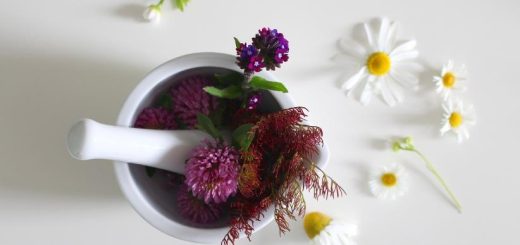Finding the Perfect Facial Mask: A Comprehensive Guide to Choosing and Using Masks for Your Skin Type
Understanding Different Types of Facial Masks
Before diving into how to choose the best mask, it’s essential to understand the different types available and their benefits:
- Sheet Masks: These are pre-soaked in a serum and designed to adhere to the face. Sheet masks are convenient and provide hydration, brightening, and anti-aging benefits. They are ideal for a quick and effective treatment.
- Clay Masks: Clay masks are great for drawing out impurities and excess oil from the skin. They come in various types, including bentonite and kaolin, which help detoxify and refine pores. These masks are particularly beneficial for oily and acne-prone skin.
- Cream Masks: These are rich and emollient, providing deep hydration and nourishment. Cream masks are ideal for dry and mature skin types as they help to restore moisture and improve skin texture.
- Gel Masks: Gel masks are lightweight and soothing, making them perfect for sensitive or irritated skin. They offer cooling effects and hydration without feeling heavy or greasy.
- Exfoliating Masks: These contain ingredients like alpha-hydroxy acids (AHAs) or beta-hydroxy acids (BHAs) to gently slough off dead skin cells. They help brighten the complexion and improve skin texture, making them suitable for dull or uneven skin.
- Peel-Off Masks: These masks dry to a film that you peel away, removing dead skin cells and impurities. They can be beneficial for exfoliation but may not be suitable for sensitive skin.
Choosing the Right Mask for Your Skin Type
Selecting a mask tailored to your skin type is crucial for achieving the best results. Here’s a guide to help you choose based on your specific needs:
- Oily Skin:
- Best Masks: Clay masks and exfoliating masks.
- Why: Clay masks help absorb excess oil and draw out impurities, reducing shine and unclogging pores. Exfoliating masks with BHAs can also help control oil and prevent breakouts.
- Dry Skin:
- Best Masks: Cream masks and hydrating sheet masks.
- Why: Cream masks provide intense moisture and can help repair the skin barrier. Hydrating sheet masks are also beneficial for delivering a burst of hydration and soothing dry patches.
- Combination Skin:
- Best Masks: Multi-masking (using different masks on different areas) or balancing masks.
- Why: Combination skin may require different treatments for various areas. For instance, using a clay mask on oily zones and a hydrating mask on dry areas can address multiple concerns simultaneously.
- Sensitive Skin:
- Best Masks: Gel masks and calming sheet masks.
- Why: Gel masks are gentle and soothing, while calming sheet masks can help reduce redness and irritation without overwhelming sensitive skin.
- Mature Skin:
- Best Masks: Cream masks and masks with anti-aging ingredients.
- Why: Cream masks help to restore moisture and elasticity. Masks containing ingredients like peptides, antioxidants, and hyaluronic acid can support the skin’s firmness and reduce the appearance of fine lines.
- Acne-Prone Skin:
- Best Masks: Clay masks and exfoliating masks with salicylic acid.
- Why: Clay masks can help reduce acne by absorbing excess oil and unclogging pores. Exfoliating masks with salicylic acid can address acne by exfoliating dead skin cells and reducing inflammation.
How to Use Facial Masks Effectively
Using facial masks correctly can maximize their benefits. Follow these steps for optimal results:
- Cleanse Your Skin: Start with a clean face to remove any makeup, dirt, or impurities. This ensures that the mask can penetrate your skin more effectively.
- Exfoliate (If Needed): If you’re using an exfoliating mask, apply it after cleansing. For other masks, exfoliation is optional but can help remove dead skin cells and enhance mask absorption.
- Apply the Mask: Follow the instructions on the mask packaging for application. For sheet masks, carefully unfold and place it on your face. For other masks, apply an even layer to your face, avoiding the eye and mouth areas.
- Relax and Wait: Allow the mask to sit for the recommended time, usually between 10-20 minutes. Use this time to relax and let the mask work its magic. Avoid leaving the mask on for longer than the recommended time, as this can lead to irritation or dryness.
- Remove the Mask: Gently remove the mask, following the instructions. For rinse-off masks, use lukewarm water and gently pat your face dry. For sheet masks, simply peel off and massage any remaining serum into your skin.
- Follow Up with Skincare: Finish with your regular skincare routine. Apply a moisturizer or serum to lock in the benefits of the mask and maintain skin hydration.
Tips for Maximizing Mask Benefits
- Patch Test: Always perform a patch test before using a new mask, especially if you have sensitive skin or are trying a product with active ingredients.
- Frequency: Use masks according to your skin’s needs. Overuse can lead to irritation, so stick to 1-2 times per week.
- Storage: Store masks in a cool, dry place to preserve their efficacy. Sheet masks can be kept in the refrigerator for an added cooling effect.
Conclusion
Facial masks are a versatile tool in skincare, offering targeted treatments for a variety of skin concerns. By understanding the different types of masks and selecting the right one for your skin type and needs, you can enhance your skincare routine and achieve healthier, glowing skin. Remember to use masks correctly and consistently for the best results, and always tailor your mask choices to your skin’s unique requirements. With the right approach, facial masks can become a refreshing and effective part of your skincare regimen.


















